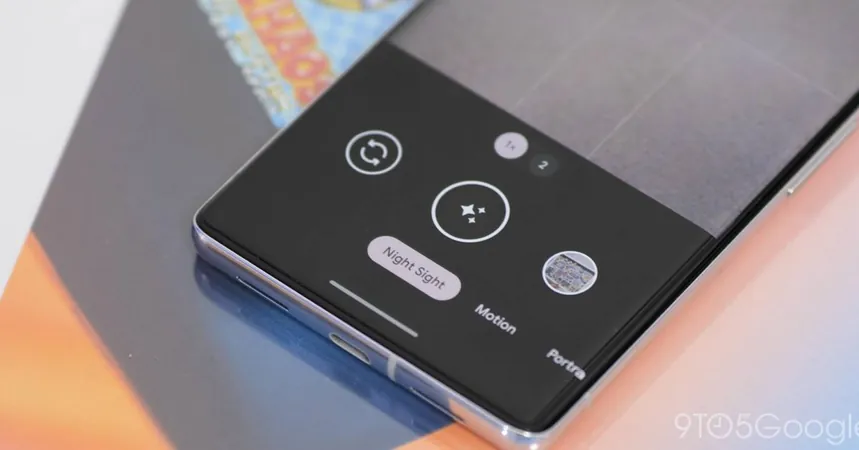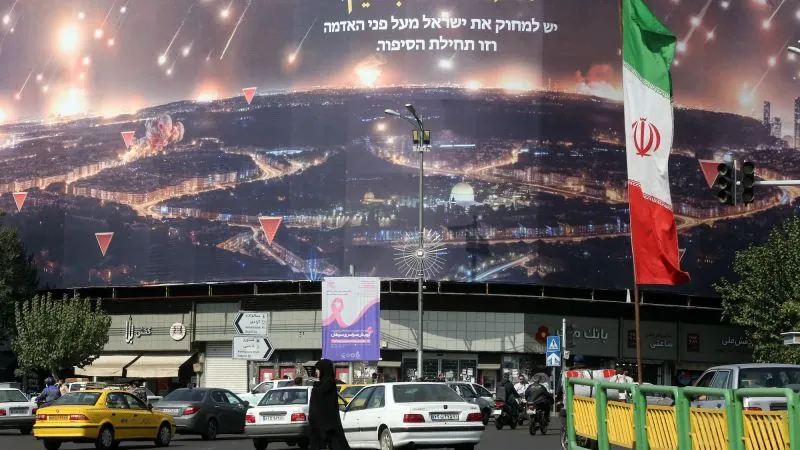
Capture the Breathtaking Northern Lights with Your Google Pixel or Android Phone: A Complete Guide!
2024-10-11
Author: Wei
As the earth braces for the largest geomagnetic storm in over two decades, an unprecedented opportunity arises to witness the spectacular Northern Lights, also known as the aurora borealis. This astonishing phenomenon is visible across vast areas of the Northern Hemisphere, including regions in the United States that rarely experience such a display. Here’s how you can capture this celestial wonder using your Google Pixel or other Android smartphones!
The Northern Lights are created when solar storms release charged particles into the Earth's atmosphere, resulting in stunning displays of color dancing across the night sky. With this weekend, particularly May 10 and 11, heralding a peak in visibility, skywatchers should be prepared to marvel at this incredible sight—even from locations where the aurora is not typically seen.
Update: Get Ready for an Aurora Extravaganza!
Recent reports indicate that starting October 10, 2024, another powerful solar storm is unfolding, potentially allowing the aurora to be seen as far south as Alabama and even parts of California. This unique event means that enthusiasts across diverse regions can seize the chance to photograph the Northern Lights, especially under optimal conditions away from light pollution.
Tips for Capturing the Northern Lights
To effectively capture the beauty of the aurora borealis, you'll need two essential items: a dark location free of artificial lighting, and a sturdy tripod to stabilize your phone.
1. Set Up Your Tripod: Secure your phone onto the tripod and launch the camera app. For Google Pixel users, activate the "Night Sight" mode, which is designed for low-light photography. If the aurora appears vivid and bright, you might achieve excellent results with just this mode.
2. Astrophotography Mode: For those wanting to capture a more detailed image, switch to the astrophotography setting available on Pixel devices. Keep your phone still for a few seconds until a star icon appears. Gently tap the shutter, and the camera will automatically adjust for a longer exposure, typically lasting up to four minutes.
3. Capture and Process: After the shot is taken, the phone processes the image and offers both a still photo and a time-lapse video, ideal for showcasing the dynamic movements of the Northern Lights.
For Other Android Phones:
While not all Android devices boast dedicated astrophotography modes, many—including Samsung Galaxy smartphones—feature standard night modes that activate automatically in low-light settings.
- If you can see the Northern Lights with your naked eye, your phone's regular night mode can likely capture them too. If the aurora is faint, you may need to explore the manual settings to enable a long exposure.
- For Samsung Galaxy users, access long-exposure by switching to "Night" mode and choosing "Max" exposure, or dive into the "Pro" mode where you can manually set exposure times to 5 or 6 seconds.
Final Thoughts: Capture and Share!
Embarking on this adventure to photograph the Northern Lights will undoubtedly be a memorable experience. If you manage to take amazing pictures, don’t hesitate to share your stunning captures on social media! And remember, the best views often come from exploring unique locations with minimal light pollution.
Prepare your cameras, bundle up, and get ready for a breathtaking night beneath the auroras. Who knows—this might be the perfect moment to unleash your photography skills and create something truly magical!



 Brasil (PT)
Brasil (PT)
 Canada (EN)
Canada (EN)
 Chile (ES)
Chile (ES)
 España (ES)
España (ES)
 France (FR)
France (FR)
 Hong Kong (EN)
Hong Kong (EN)
 Italia (IT)
Italia (IT)
 日本 (JA)
日本 (JA)
 Magyarország (HU)
Magyarország (HU)
 Norge (NO)
Norge (NO)
 Polska (PL)
Polska (PL)
 Schweiz (DE)
Schweiz (DE)
 Singapore (EN)
Singapore (EN)
 Sverige (SV)
Sverige (SV)
 Suomi (FI)
Suomi (FI)
 Türkiye (TR)
Türkiye (TR)